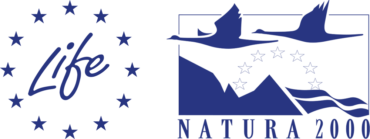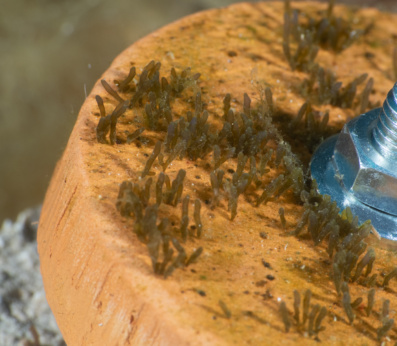While monitoring the seabed in front of Punta Licosa, something different caught his attention from the surface. Ten meters below, the algal fronds appeared brighter compared to previous dives.
As he approached the first clump of Cystoseira anchored on the rock, Francesco couldn’t contain his excitement. The reflection of the undertow on those small, brighter specks at the top of the tallus illuminated his eyes hidden behind the mask.
The researcher knew it was the beginning of what they had been waiting for: the algae had begun their fertile period!
One of the locations where the REEForest project aims to restore the presence of Cystoseira is the Marine Protected Area of Santa Maria di Castellabate in Cilento.
This particular group of brown seaweed, the protagonist of our adventures, used to flourish along that part of the coast, towards Agropoli city.
Researchers from Parthenope University are responsible for determining when and if the lush Cystoseira forest, now limited to the southern cape, will begin to develop fertile offshoots.
To harvest the Cystoseira apices containing the “seeds” for laboratory cultivation, it is necessary to obtain the tips of the algae branches at sea during their peak fertile period.
Once these apices have grown to the appropriate size (known as refuge size) in a controlled environment, the new seedlings will be reintroduced into the wild, but this time to the receiving site.
The chosen site for planting, a few nautical miles from the donor site, currently lacks any Cystoseira presence. However, thanks to the REEForest project, it will be able to thrive again.
After informing the project partners that the two Cystoseira species of interest were ready for collection, a delegation from Shoreline (Trieste) joined the Neapolitan researchers for a initial sampling attempt.
Despite the strong winds and some strong current, Saul, Marco, Tommaso, Luca, and Francesco managed to conduct a series of dives in just a few days, retrieving only a few apexes of Cystoseira corniculata and crinitophilla from the rocky seabed of Punta Licosa in the Cilento National Park.
This ensures the sustainability of the “harvest”. By cutting off only a few of the small fertile fronds, easily recognizable underwater by the presence of numerous small whitish swellings at their ends, there will be no significant impact on the algal population.
Once transported ashore, the fronds underwent a quick cleaning process to remove epiphytes that could contaminate the entire laboratory cultivation.
They were then immediately transferred in the cool environment of a van to the University of Trieste, where they would be handed over to Professor Falace’s team.
Now, all that remains is to wait and see if the timing for harvesting was right. Many variables are at play, so let’s keep our fingers crossed!
More news to come!






